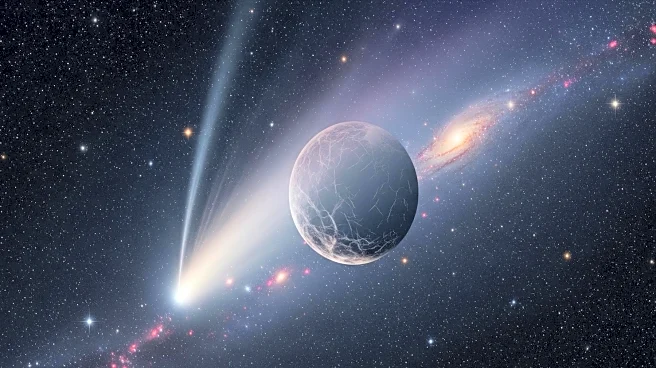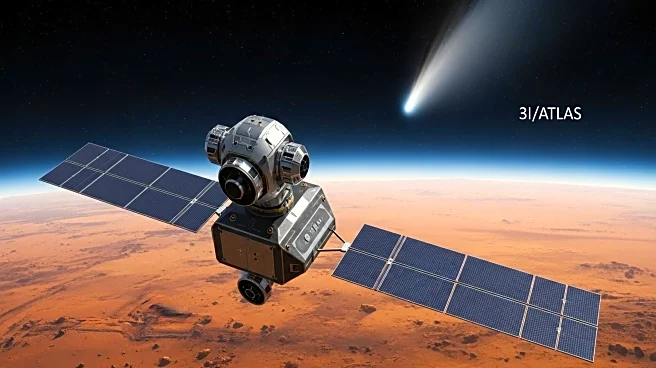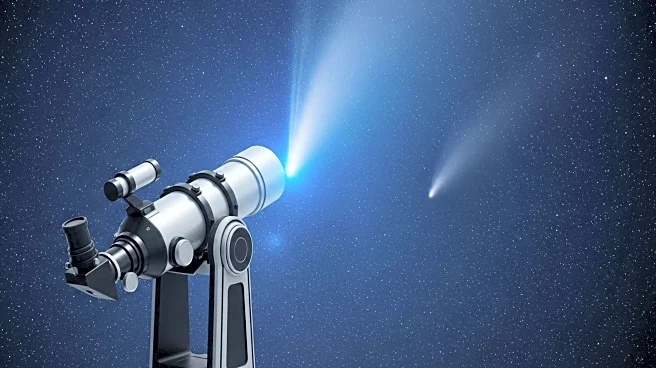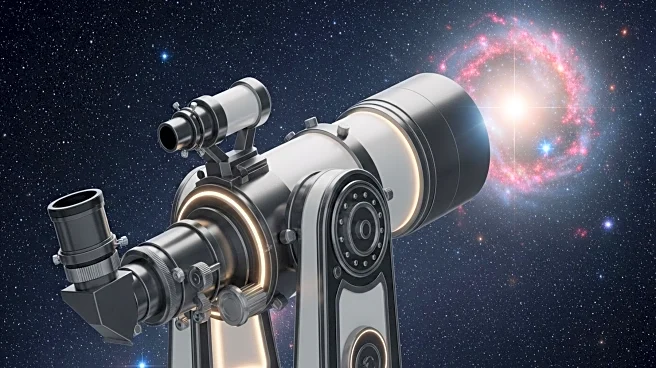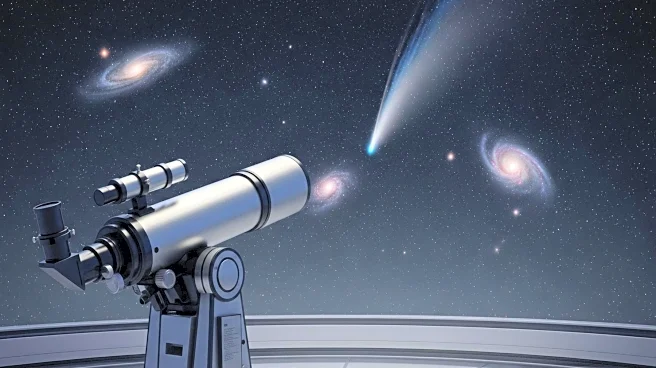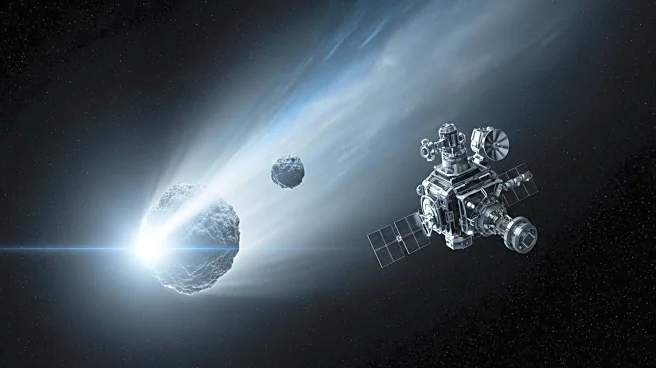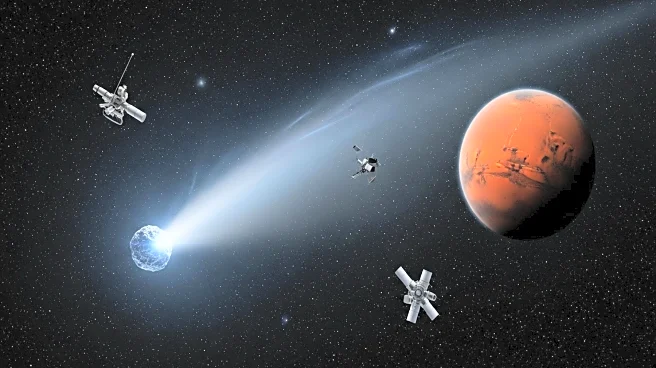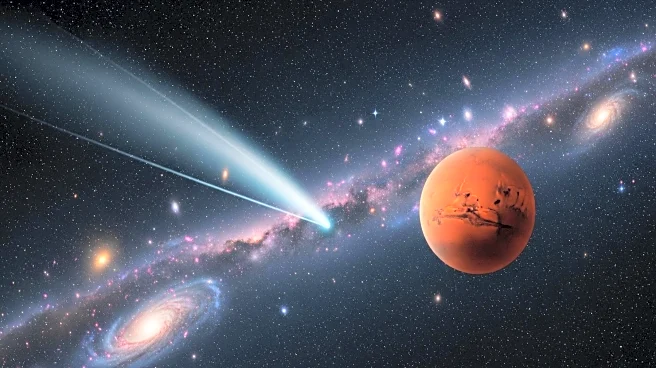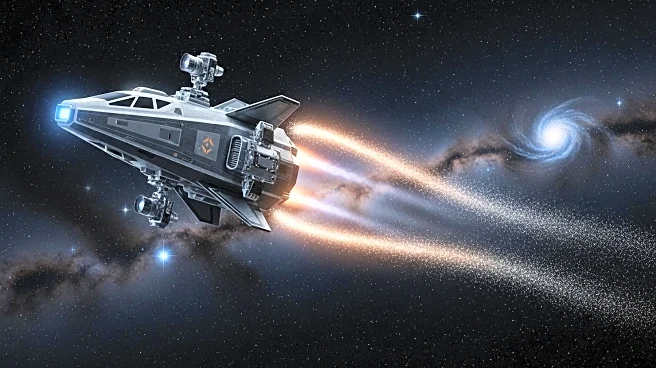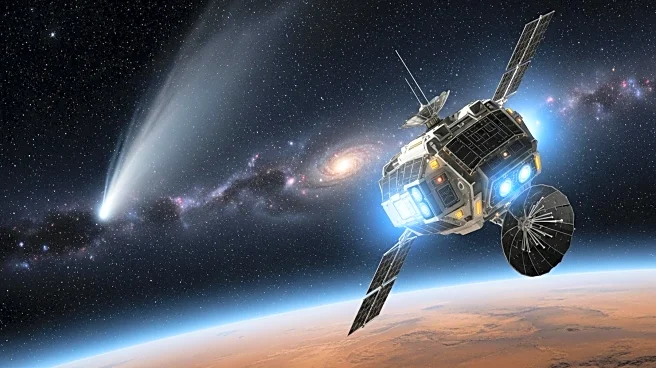What's Happening?
The interstellar comet 3I/ATLAS, discovered in July 2025 by the ATLAS observatory in Chile, has entered the Solar System, exhibiting unusual behavior that has intrigued astronomers. This comet is only the third confirmed interstellar object observed, following Oumuamua in 2017 and Borisov in 2019. 3I/ATLAS is moving on a hyperbolic path, indicating it is not bound by the Sun's gravity and will eventually leave the Solar System. Unlike typical comets, it travels along the plane of the planets, a trajectory that has led to speculation about its origins. Additionally, it features a rare double tail, with one tail extending forward along its line of motion, which has fueled discussions about potential non-natural forces or geometry.
Why It's Important?
The investigation into 3I/ATLAS is significant as it offers a rare opportunity to study material from another star system. The comet's unusual trajectory and features have sparked discussions about the possibility of it being an artificial object, which, if proven, would be a profound discovery. The comet's behavior challenges existing understanding of interstellar objects and could provide insights into the formation and characteristics of celestial bodies from other star systems. The scientific community is keen to explore these anomalies further, as they could have implications for understanding the universe's complexity and the potential for extraterrestrial technology.
What's Next?
Currently, 3I/ATLAS is behind the Sun, making it invisible to ground-based telescopes. It is expected to re-emerge in late October, coinciding with its closest approach to the Sun. Once visible, astronomers plan to resume observations using both Earth-based observatories and space telescopes, including the James Webb Space Telescope and the Vera C. Rubin Observatory. These observations aim to determine the comet's size, shape, and rotation more precisely. The scientific community is preparing for a coordinated international campaign to study the comet's changing brightness and gas emissions as it heats up.
Beyond the Headlines
The comet's alignment with the planetary plane has led to speculation about its origins, with some scientists considering the possibility of it being an alien probe. While most scientists remain cautious, the idea of an artificial origin is intriguing and worth exploring. The comet's unusual features, such as its double tail and strong CO₂ outgassing, suggest it may have formed in a very cold region of its original star system. The study of 3I/ATLAS could provide valuable insights into the diversity of interstellar objects and the potential for non-natural explanations.

